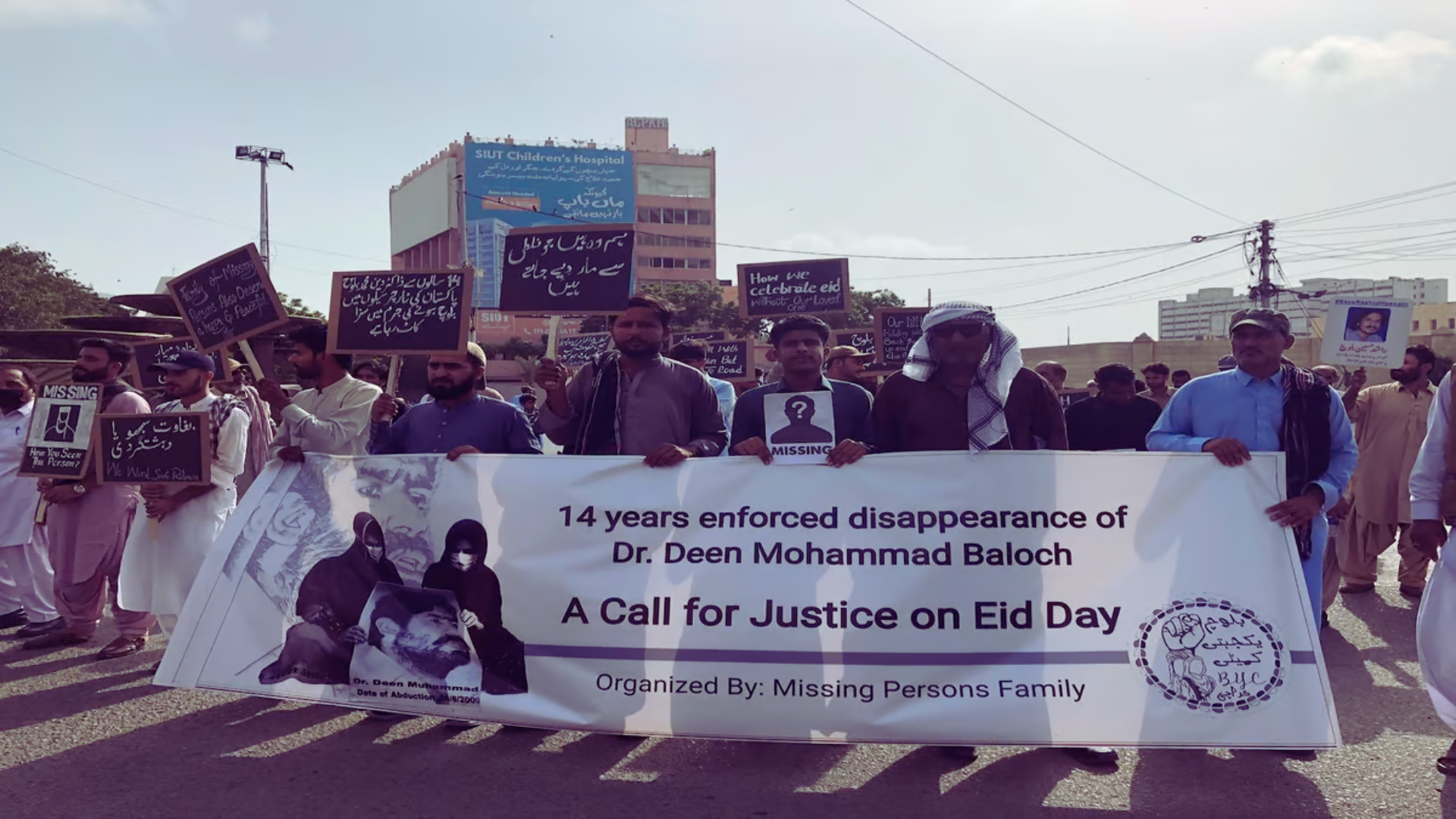This year’s Eid celebrations in Balochistan, Pakistan, were overshadowed by protests demanding the release of missing relatives. Reports from various regions of Balochistan indicate that during the festivities, people took to the streets to voice their concerns. In Quetta, protestors held placards and distributed pamphlets, calling fervently for the release of their missing family members.
Protests in Kech: In Kech, particularly at Turbat’s Fida Chowk, families of the disappeared staged a sit-in, continuing their earlier demonstrations outside the DC office. Additionally, they organized a rally at the Turbat press club, showing their unwavering determination in the pursuit of justice.
Social Media Campaign: The protests garnered significant support on social media, with hashtags like #BalochistanProtestOnEid and #StopBalochGenocide gaining momentum. These digital movements highlighted the widespread support and awareness for the protests, reflecting the community’s profound anguish and resilience.
Solidarity from Activists: Numerous Baloch activists expressed solidarity with the protesters, advocating for the release of individuals who have gone missing under contentious circumstances involving security agencies and the military. They called for justice and transparency, amplifying the voices of families enduring the uncertainty and anguish of their loved ones’ disappearances.
The protests and online support underscore a unified stance against enforced disappearances in Balochistan, emphasizing the urgent need for accountability in resolving these cases.




